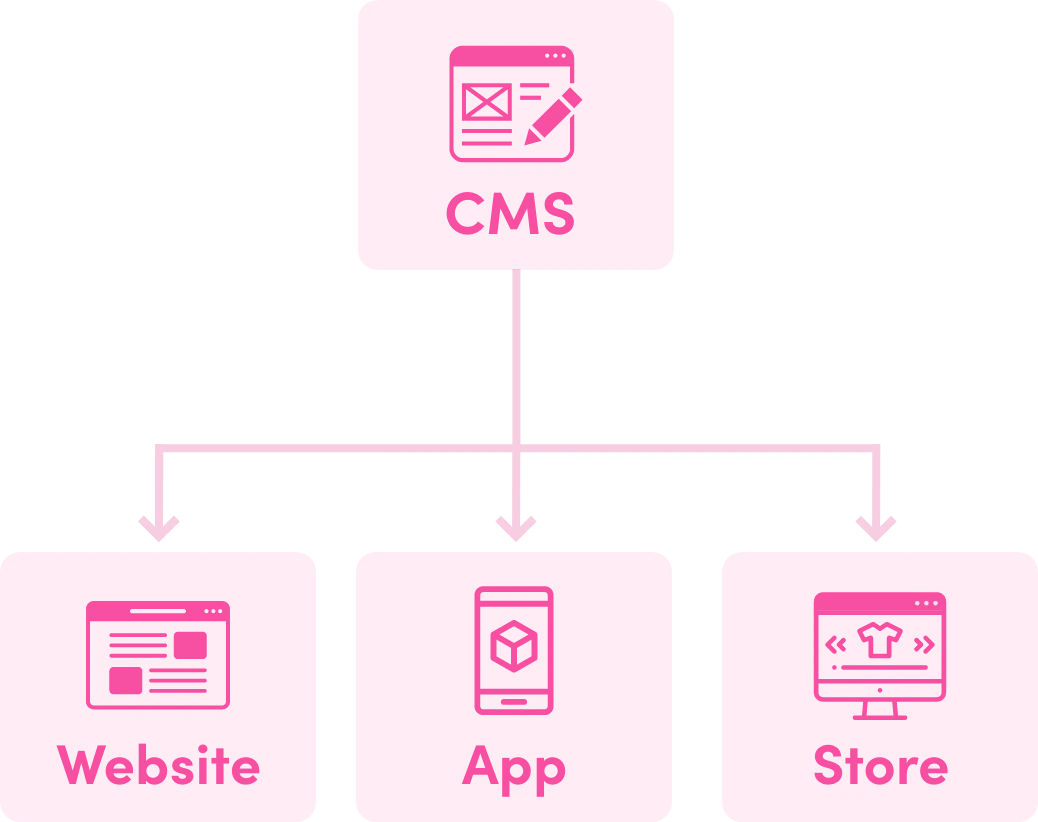Introduction
Traditional CMS architecture was once the standard for web development, but today companies are looking for the increased flexibility and scalability provided by headless CMS software solutions.
— Contentful, Headless CMS explained in 1 minute
Traditionally, a content management system (CMS) is responsible for both the backend management of the site’s content and serving that content to end-users. For example, WordPress offers an admin area where content editors can manage the site content, but also provides ways for that content to be displayed to site visitors, via a WordPress theme. These themes can be heavily customised, or built from scratch, but they are still very closely tied to WordPress and how it stores its data. Traditional CMSs are often called ‘monolithic’ because they are usually large and powerful but slow to change.
In recent years, there’s been a shift away from the traditional CMS, towards a ‘headless’ model. In this blog post, we’ll explain what it is and what are its benefits.
What is a headless CMS?
A headless CMS is one that does not know where its data will be displayed. It will store and manage content, but where and how that content (the ‘head’) is displayed is decided separately. This means the content stored within your CMS can be connected to multiple ‘heads’, such as websites, apps, chatbots, and voice apps – anywhere that content can be delivered.

Why use a headless CMS?
While there are lots of different benefits to using a headless CMS, it all boils down to one core concept: headless CMSes enable everyone on the team to do their best work.
– Netlify, The Beginner’s Guide To Headless CMSes
1. Your content is not tied to your website
A well-designed headless CMS can store content for a variety of channels, and not just digital! Manage content for any product or service – app, website or even print – all from the same place.
2. The right technology
When the CMS only cares about the site’s content, we’re free to choose what technology we use to build the front end. That means we can reach for more advanced frameworks such as React to build stunning animations and seamless user experiences.
3. Future-proofing
No more complete site rebuilds. When it’s time to give your website a whole new look, you don’t have to start from scratch. You can hang on to your existing CMS, and just rebuild the front end. No content migration, no data loss, no disruption.
4. Better performance
Using a traditional CMS means your site’s pages are built on the fly when a user visits your site. When we decouple the CMS from the front-end, we can leverage technologies that pre-build your site in advance. They’re also then served globally via a CDN, for even more speed. This is very good news for your site’s Core Web Vitals score and therefore SEO.
A decoupled approach instead pre-renders pages at deploy time, which means when a user requests them, they’re already built. They’re also then served globally over a CDN, and when it comes to minimizing time to first byte (TTFB), nothing beats pre-built files served at the edge.
– Netlify, The Beginner’s Guide To Headless CMSes
5. Increased security
Separating the back-end of your site from the very visible front-end makes it much harder for anyone to attack. And by pre-generating the pages, we reduce that risk even further.
When does it make sense to go headless?
Headless content management isn’t the right solution for everyone. It can be more time-consuming and therefore expensive to build, and if you’re not likely to benefit from the advantages it can bring, then it may not be right for you.
We recommend going headless if:
- You have multiple channels, eg. sites, apps
- You have complex integration or animation needs
- You need to achieve better site performance


